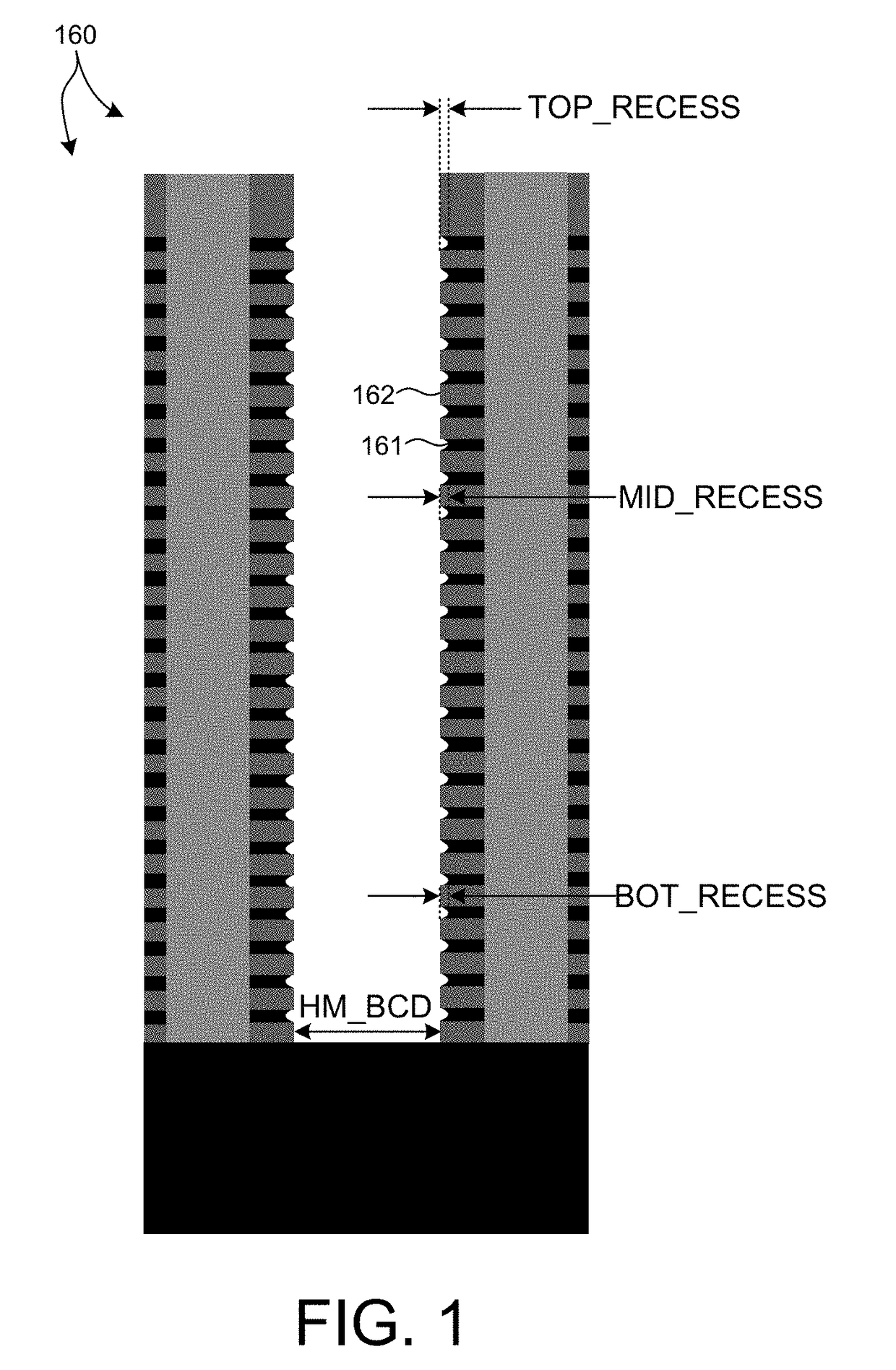Methods And Systems For Measurement Of Thick Films And High Aspect Ratio Structures
a technology of high aspect ratio and measurement method, applied in the field of metalrology system and method, can solve the problems of many optical techniques suffer from low signal-to-noise ratio (snrs), and achieve the effect of reducing the influence of backside reflection
- Summary
- Abstract
- Description
- Claims
- Application Information
AI Technical Summary
Benefits of technology
Problems solved by technology
Method used
Image
Examples
embodiment 180
[0049]FIG. 6 depicts an embodiment 180 of a combined illumination source 110. As depicted in FIG. 6, a LSP pump laser source 181 generates pump light 182 that is focused by focusing optics 183 to sustain a plasma 184 contained by bulb 185. Plasma 184 generates broadband spectrum light over a wavelength range of ultra-violet to short infrared. Bulb 185 includes an exit port 186. LSP output light 187 is the portion of light from plasma 184 that passes through exit port 186 and is directed towards the illumination optics subsystem as described with reference to FIG. 5. In addition, supercontinuum laser source 191 generates infrared light 192 that is focused by focusing optics 193 to a focus 194 at or near plasma 184. Supercontinuum output light 197 is the portion of light from the focus 194 that passes through exit port 186 and is directed towards the illumination subsystem as described with reference to FIG. 5. In one example, the LSP output light 187 and supercontinuum output light 1...
embodiment 200
[0050]FIG. 7A depicts an embodiment 200 of a combined illumination source 110. As depicted in FIG. 7, a voltage provided across a cathode 208 and an anode 209 generates a plasma 204 contained by bulb 205. In addition, a LSP pump laser source 201 generates pump light 202 that is focused by focusing optics 203 to sustain plasma 204 contained by bulb 205. Plasma 204 generates broadband spectrum light over a wavelength range of ultra-violet to short infrared. Ultraviolet / visible / short infrared light 207 generated by plasma 204 is provided to the illumination optics subsystem as described with reference to FIG. 5. In addition, supercontinuum laser source 211 generates infrared light 212. Infrared light 212 is focused by focusing lens 213 and forms a focus 214 at or near plasma 204. Infrared light 217 from focus 214 is provided to the illumination optics subsystem as described with reference to FIG. 5. In one example, UV / visible / short infrared light 207 and infrared light 217 are collocat...
embodiment 220
[0051]FIG. 7B depicts an embodiment 220 of a combined illumination source 110. As depicted in FIG. 7B, a voltage provided across a cathode 228 and an anode 229 generates a plasma 224 contained by bulb 225. In addition, a LSP pump laser source 221 generates pump light 222 that is focused by focusing optics 223 to sustain plasma 224 contained by bulb 225. Plasma 224 generates broadband spectrum light over a wavelength range of ultra-violet to short infrared. Ultraviolet / visible / short infrared light 227 generated by plasma 224 exits bulb 225 through exit port 226 and is provided to the illumination optics subsystem as described with reference to FIG. 5. In addition, supercontinuum laser source 231 generates infrared light 232. Infrared light 232 is focused by focusing lens 233. Infrared light 237 from supercontinuum laser source 231 is provided to the illumination optics subsystem as described with reference to FIG. 5.
[0052]As depicted in FIG. 7B, UV / visible / short infrared light 227 an...
PUM
 Login to View More
Login to View More Abstract
Description
Claims
Application Information
 Login to View More
Login to View More - R&D
- Intellectual Property
- Life Sciences
- Materials
- Tech Scout
- Unparalleled Data Quality
- Higher Quality Content
- 60% Fewer Hallucinations
Browse by: Latest US Patents, China's latest patents, Technical Efficacy Thesaurus, Application Domain, Technology Topic, Popular Technical Reports.
© 2025 PatSnap. All rights reserved.Legal|Privacy policy|Modern Slavery Act Transparency Statement|Sitemap|About US| Contact US: help@patsnap.com



